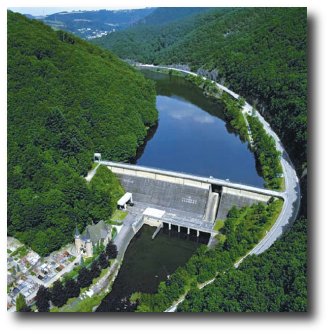 According to the Environmental Literacy Council, an organization aimed at helping schools educate young people about the environment, “Water has long been used as a source of energy. It began with the Greeks using water wheels to grind wheat into flour over 2,000 years ago. From there, the use of water wheels expanded to wood and power textile mills and other manufacturing plants.”
According to the Environmental Literacy Council, an organization aimed at helping schools educate young people about the environment, “Water has long been used as a source of energy. It began with the Greeks using water wheels to grind wheat into flour over 2,000 years ago. From there, the use of water wheels expanded to wood and power textile mills and other manufacturing plants.”
Still according to the organization, “hydroelectricity involves power being generated by hydraulic turbines that rotate due to moving water as it flows from a higher to lower elevation. Twenty percent of the world’s electricity is produced by hydropower plants and there are over 2,000 hydropower plants in the United States, providing approximately 10 percent of our total electricity. Canada, Norway, and New Zealand are three countries that use hydroelectric power as their primary source of electricity generation.”
So what’s the verdict?
GOOD POINTS: It is generally accepted that hydropower is fairly clean to run. It is classified as a renewable source of energy, emitting a very low level of greenhouse gases when compared to fossil fuel plants. Hydropower has a low operating cost, once installed, and can be highly automated. An additional benefit is that the power is generally available on demand since the flow of water can be controlled.
BAD POINTS: There are environmental problems with it, though. The building of a dam often includes the displacement of thousands of people because of the flooding of the areas where they live. See the case of the Three Gorges Dam project on the Yangtze River in China. Another notorious issue is that dams can prevent fish from reaching their spawning grounds or the ocean. The diversion of water can impact stream flow, or even cause a river channel to dry out, degrading both aquatic and streamside habitats. Hydroelectric plants can also have an impact on water quality by lowering the amount of dissolved oxygen in the water. In the reservoir, sediments and nutrients can be trapped and the lack of water flow can create a situation for undesirable growth and the spread of algae and aquatic weeds.
There is an organization called Low Impact Hydropower Institute (LIHI), which has created a voluntary certification program whereby facilities are classified as low impact after passing a series of tests that demonstrate minimal impact. In early 2007, the Pelton Round Butte hydroelectric facility in Oregon received green power certification, joining only 26 other facilities in the U.S. with that distinction. The facility will implement a variety of environmental protection measures, including a new fish passage system that will reopen 226 miles of streams above the facility’s three dams to further fish migration.
So, to put it in a nutshell, hydropower is potentially a viable alternative which can also use tidal power as source of energy. But it needs improvements and monitoring that seem to be within reach of current technology.






This website is great. i love it
Thank you!
its just a website it may be good but u don’t have to marry it